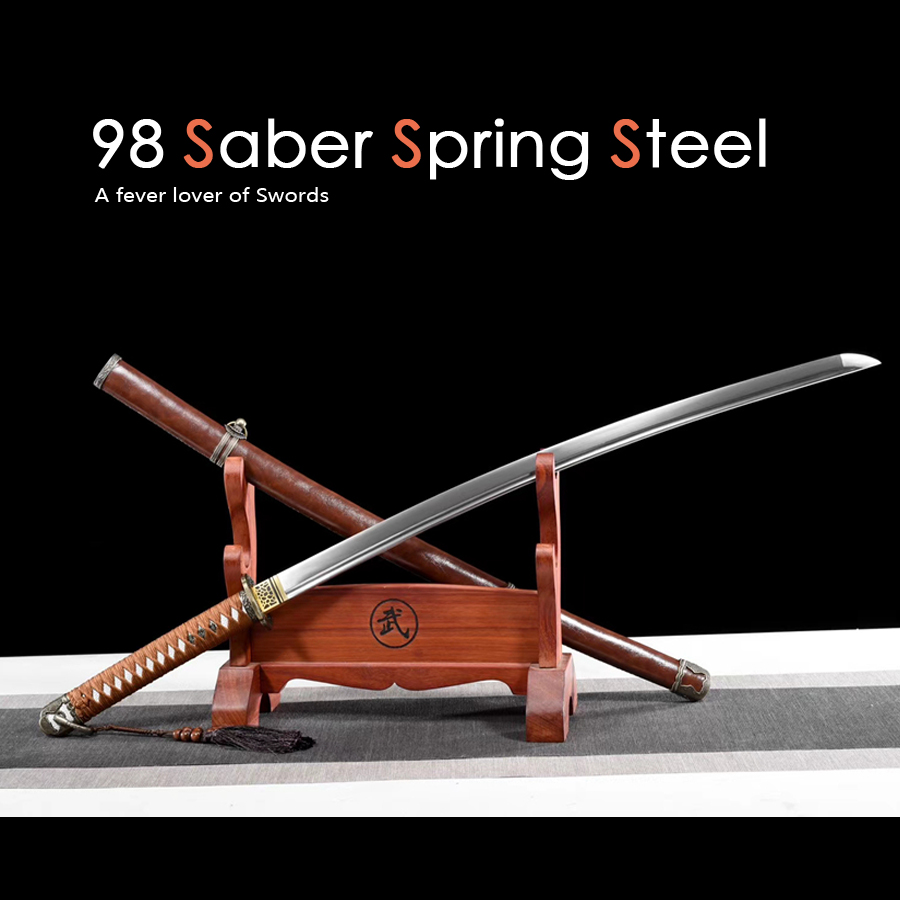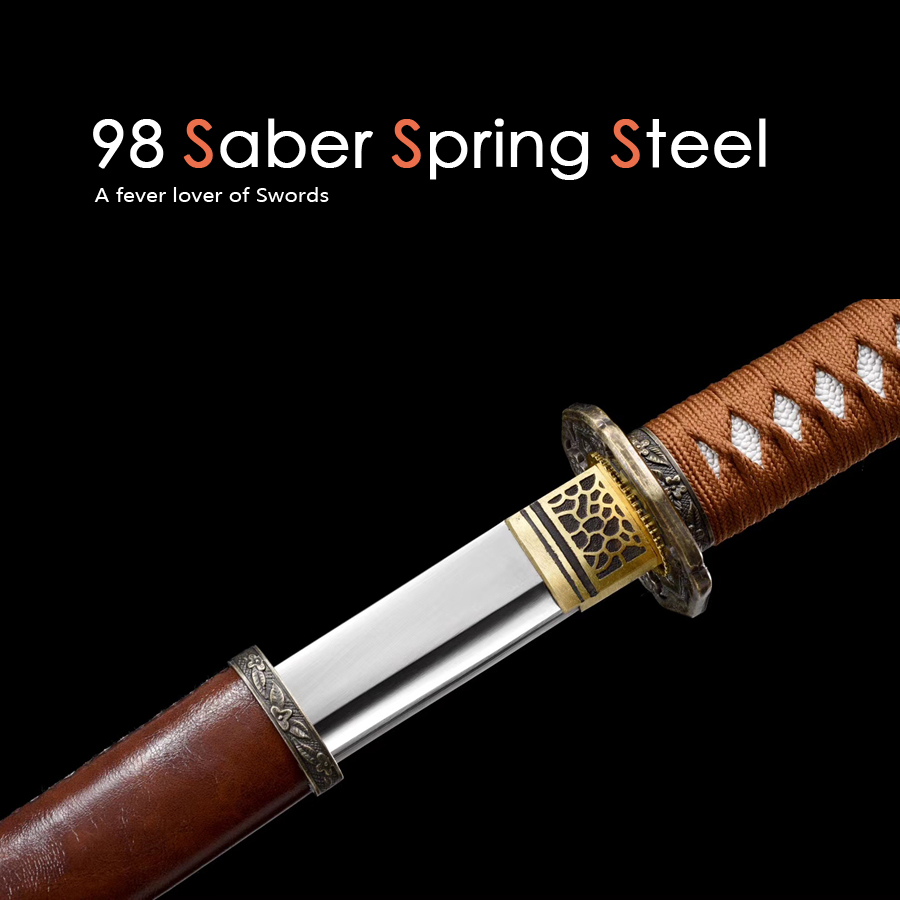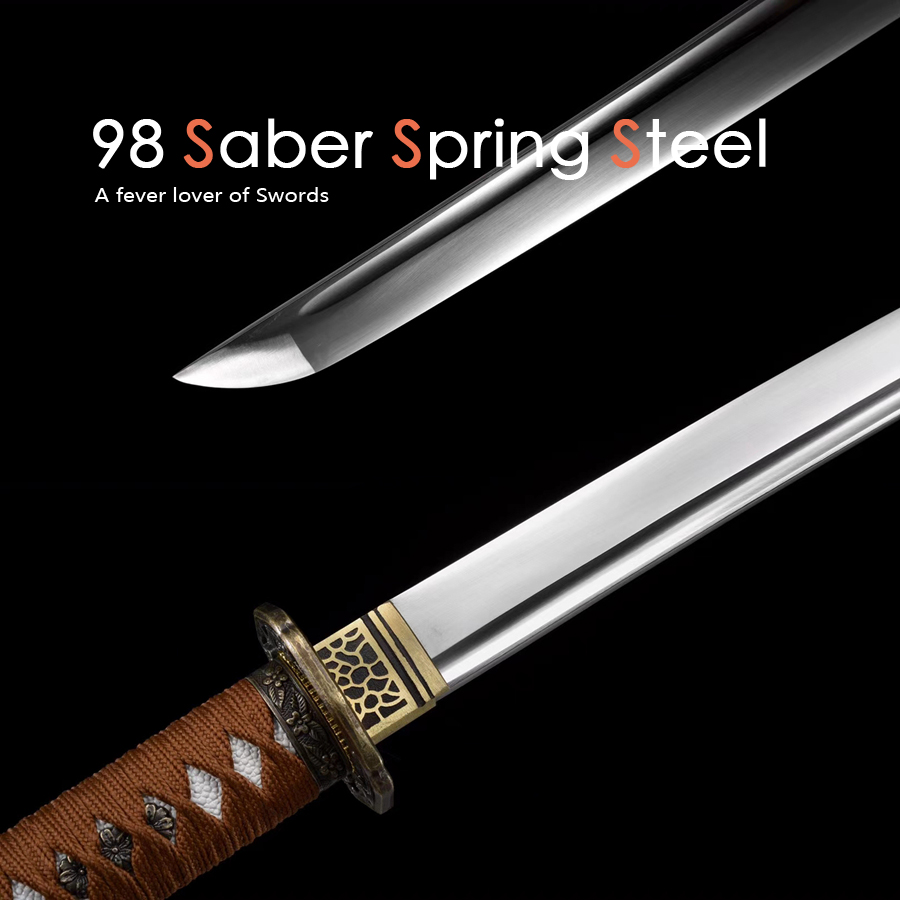The Origin of Type 98 Japanese Military Sword and Its Role in Warfare: A Study of Officer Swords During Militarism Period
Introduction
During Japan's militaristic expansion in the 1930s, the Imperial Japanese Army widely adopted the standardized "Type 98 Military Sword." This weapon preserved traditional samurai sword craftsmanship while adapting to modern warfare needs, becoming a status symbol for Japanese officers during WWII. This article examines the Type 98's origins, manufacturing characteristics, distinctions between different officer ranks, and its actual use in the Second Sino-Japanese War and Pacific Theater.
Keywords: Type 98 Military Sword, Japanese military sword, WWII Japanese officer sword, Showa period sword, militarism weapons
I. Historical Origins of Type 98 Sword
Officially designated "Army Standard Military Sword (Type 98)," it entered production in 1938 (Showa 13). Its development reflected the Army's emphasis on bushido spirit and lessons from the Russo-Japanese War (1904-1905), where officers found Western-style sabers less practical in close combat than traditional Japanese swords.
The design blended traditional "katana" features with modern military requirements:
Western-style fittings to match uniforms
Traditional Japanese blade curvature and sharpness
Metal scabbards for battlefield durability
II. Sword Variations by Officer Rank
In Japan's militaristic hierarchy, officer swords symbolized status and position. Type 98 swords differed significantly in materials, decorations, and craftsmanship according to rank:
General Officers' Swords:
Traditionally forged tamahagane blades
Ornately engraved tsuba (guards)
Samegawa (ray skin) and silk-wrapped handles
Gold or silver-plated scabbards
Field Officers' Swords:
Machine-made modern steel blades
Simpler decorations
Standard ray skin handles
Plain metal scabbards
Company Officers' Swords:
Fully machine-produced
Minimal decorations
Imitation material handles
Utilitarian appearance
Keywords: Japanese general's sword, field officer sword, company grade officer sword, Showa period sword grades
III. Wartime Deployment of Type 98 Swords
During the Second Sino-Japanese War and Pacific War, Type 98 swords served multiple functions:
Command Functions:
Senior officers directing troops
Scabbard taps as signals
Sword raises indicating attack directions
Combat Functions:
Close-quarter fighting
Executing prisoners and civilians (documented in Nanjing Massacre etc.)
Vegetation clearing in jungle warfare
Symbolic Functions:
Embodied bushido spirit
Represented officer honor
Used in seppuku (ritual suicide)
Later-war production showed declining quality with cheaper steels and simplified processes, reflecting Japan's deteriorating war economy.
IV. Manufacturing and Craftsmanship
Type 98 production involved complex systems:
Traditionally Forged:
Handmade by master smiths
Folded steel construction
Custom-made for senior officers
Semi-machine-made:
Machine-formed blades
Hand heat-treatment
Majority of production
Fully Machine-made:
Assembly line production
Inferior quality
Dominant in late war
Major production sites included Tokyo and Osaka Arsenals, and Seki City. Approximately 300,000 Type 98 swords were produced during the war.
V. Notable Swords and Smiths
Certain Type 98 swords gained particular renown:
Gassan Sadakazu: Imperial smith for generals
Kurihara Hikosaburo: Renowned for sharpness
Navy Minister Yonai Mitsumasa's sword: Preserved at Yasukuni Shrine
General Yamashita Tomoyuki's sword: Captured as war trophy
These masterpieces often featured traditional "hamon" temper lines, combining utility with artistic merit.
VI. Postwar Fate and Collecting
After WWII, Allied authorities confiscated Japanese swords en masse:
Approximately 600,000 military swords seized
About 1/3 were traditionally-made valuables
Most destroyed or dumped at sea
Some kept as war trophies by Allied officers
Today, well-preserved Type 98 swords, especially masterworks, command high prices in international markets, with general-grade traditionally-forged examples fetching tens of thousands of dollars.
Conclusion
The Type 98 military sword, a peculiar product of Japanese militarism, carried both traditional sword-making artistry and functioned as a tool of aggressive warfare. Its history mirrors Japan's trajectory from imperial expansion to ultimate defeat. As historical artifacts, these swords remain silent witnesses to that contradictory and violent era.
The Origin of Type 98 Japanese Military Sword and Its Role in Warfare A Study of Officer Swords Dur
